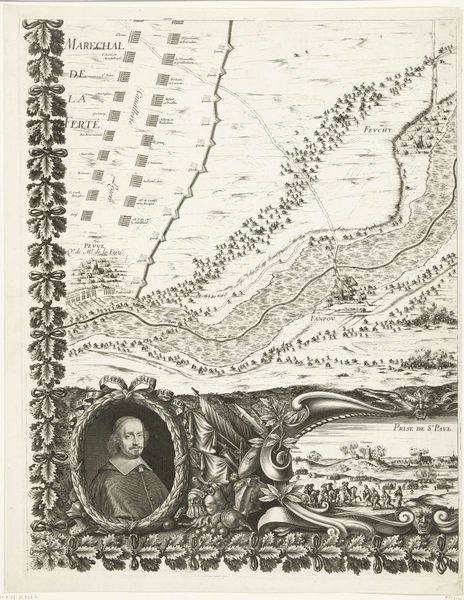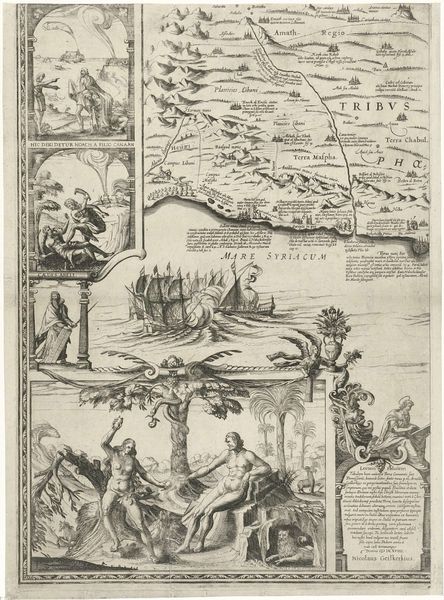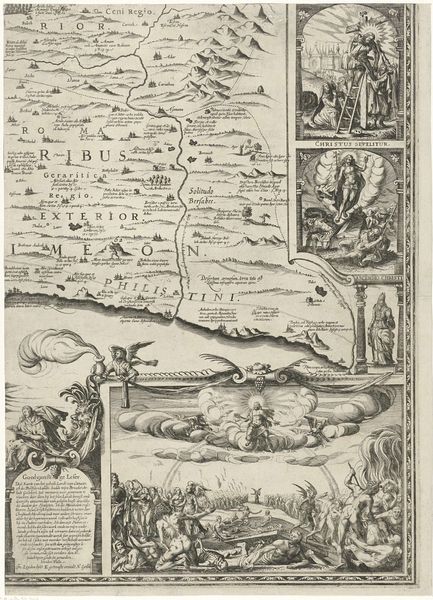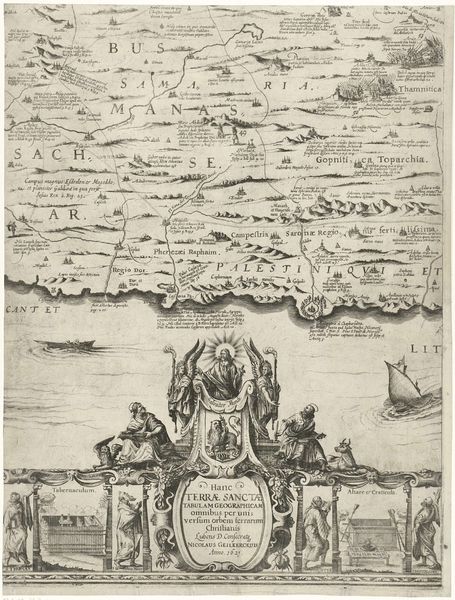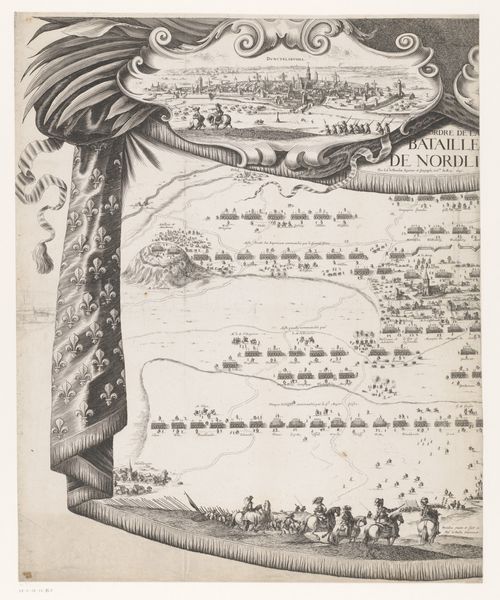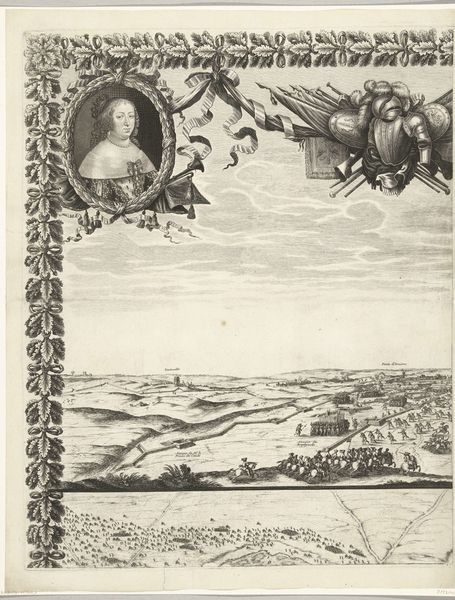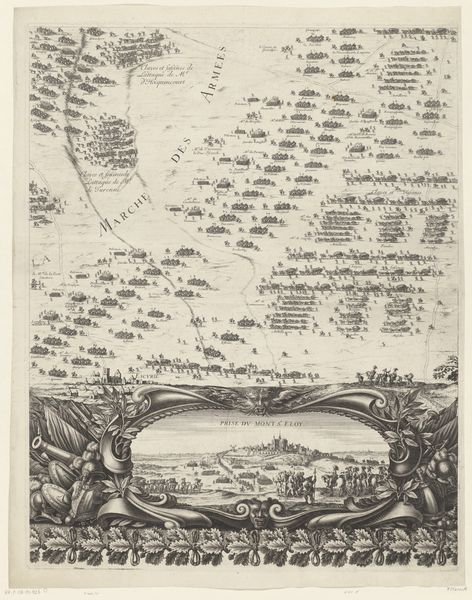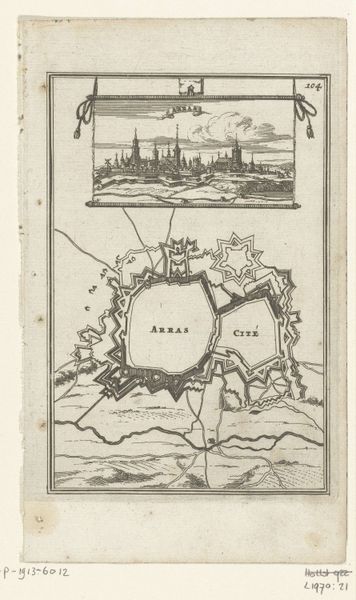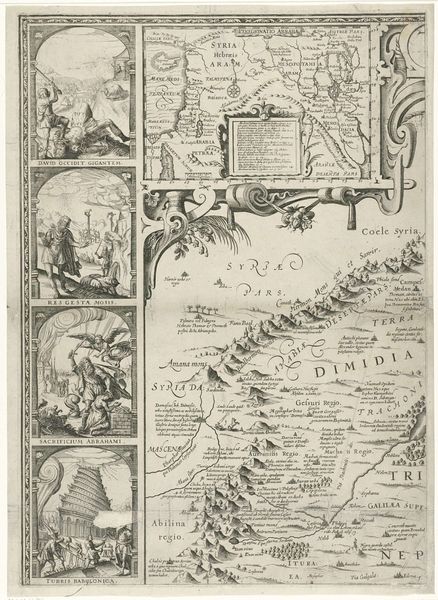
Ontzet van Arras, belegerd door de Spanjaarden (onderste rij, plaat 2), 1654 1655
0:00
0:00
nicolascochin
Rijksmuseum
print, engraving
#
portrait
#
baroque
#
pen drawing
# print
#
cityscape
#
history-painting
#
engraving
Dimensions: height 590 mm, width 457 mm
Copyright: Rijks Museum: Open Domain
Curator: This print, created around 1655 by Nicolas Cochin, is titled "Ontzet van Arras, belegerd door de Spanjaarden", it translates to "Relief of Arras, besieged by the Spaniards." It’s currently held here at the Rijksmuseum. My initial response is that this feels like an infographic from the Baroque era. So dense and full of elements, it could almost be a news diagram or something related. What do you see first, from your perspective? Editor: I'm immediately drawn to how war and power are being framed. The inclusion of a portrait along with a militarized landscape map is deeply symbolic. How are the materials – the engraver's tools, the paper – used to promote power here? What specific choices of visual encoding? Curator: Precisely! This engraving, done in printmaking ink, showcases the relief of Arras during the Franco-Spanish War. Note how the detailed cityscape at the top gives way to scenes of military deployment, while the bottom part includes the engraved portrait as you noted, framed ornately with Baroque leaf decorations and battle weaponry like helmets. The medium provides a mechanism to quickly disseminate representations of power as reproducible propaganda. Editor: This blend of cartography, portraiture, and symbolic ornamentation makes it a fascinating study in identity politics of the period. Who gets to have their likeness recorded, distributed and why? We should contextualize the materials of artmaking, but equally consider how art functions in culture-making. How were pieces like this received and distributed amongst social networks? Curator: Absolutely. Printmaking made it cheaper than commissioned portraits. However, the skill involved to depict perspective across these combined zones, and in such miniaturized detail indicates that Cochin had clearly refined expertise. There must have been complex organization to disseminate it at scale to the consumers of media back in 17th century. Editor: Right. The combination of art, labor and resources— from the mining of materials to the skills for execution— illustrates material investment to disseminate ideology. We must keep our scope intersectional; how do issues such as war, material scarcity and politics interplay with questions of race and gender when discussing cultural narratives of success and access to artmaking tools? Curator: Excellent points, which leads me to believe that examining it using tools of discourse and material studies reveals much about its impact on perception of power in this period. Editor: It forces us to think critically about the visual economies and societal power dynamics, the artwork both embodies and perpetuates.
Comments
No comments
Be the first to comment and join the conversation on the ultimate creative platform.
